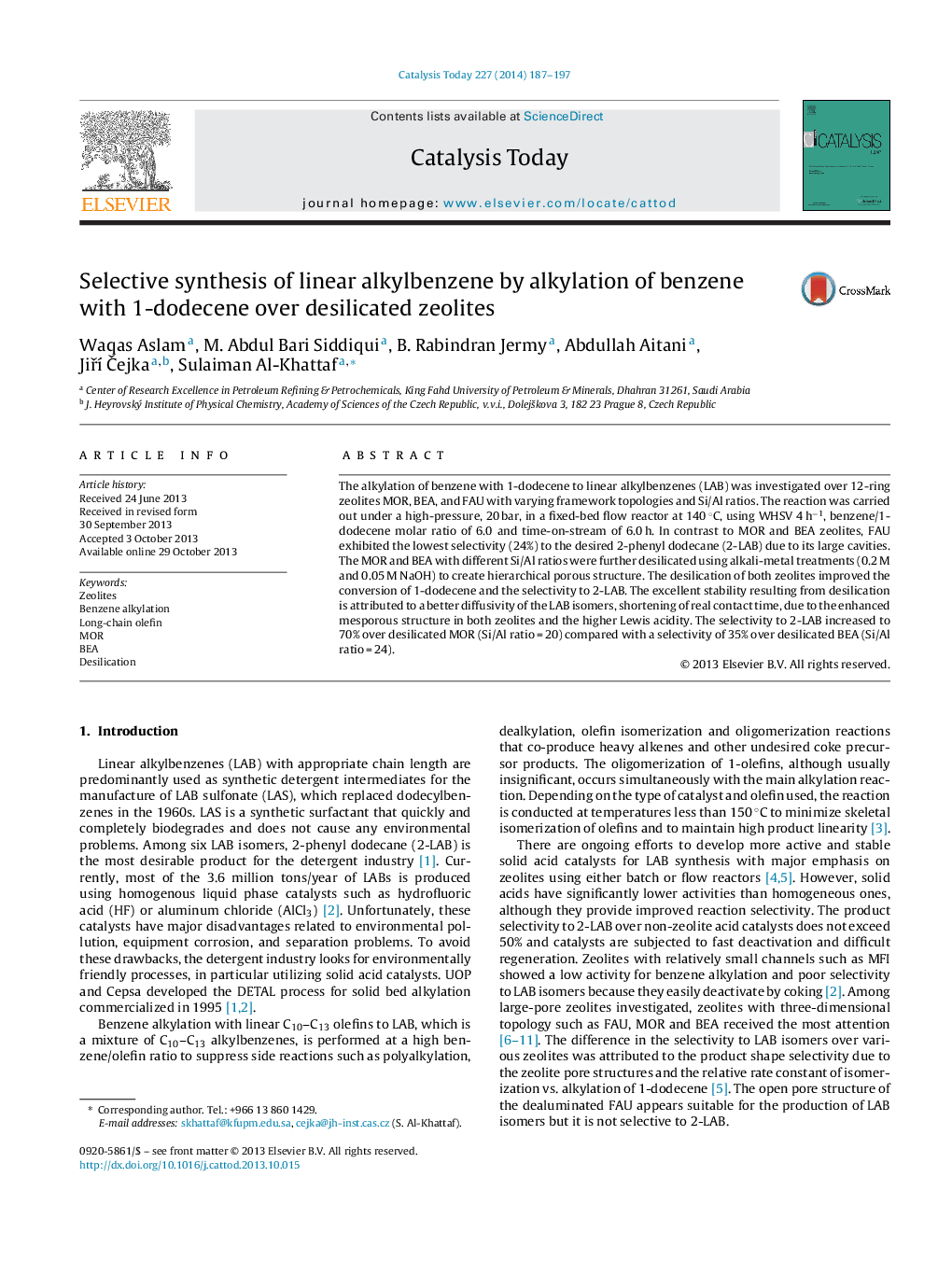| Article ID | Journal | Published Year | Pages | File Type |
|---|---|---|---|---|
| 54175 | Catalysis Today | 2014 | 11 Pages |
•We show a high activity of desilicated BEA and MOR catalysts in benzene alkylation.•The highest 1-dodecen conversion is achieved over BEA-40 zeolite.•Desilication improved zeolite performance probably due to easier transport of products.
The alkylation of benzene with 1-dodecene to linear alkylbenzenes (LAB) was investigated over 12-ring zeolites MOR, BEA, and FAU with varying framework topologies and Si/Al ratios. The reaction was carried out under a high-pressure, 20 bar, in a fixed-bed flow reactor at 140 °C, using WHSV 4 h−1, benzene/1-dodecene molar ratio of 6.0 and time-on-stream of 6.0 h. In contrast to MOR and BEA zeolites, FAU exhibited the lowest selectivity (24%) to the desired 2-phenyl dodecane (2-LAB) due to its large cavities. The MOR and BEA with different Si/Al ratios were further desilicated using alkali-metal treatments (0.2 M and 0.05 M NaOH) to create hierarchical porous structure. The desilication of both zeolites improved the conversion of 1-dodecene and the selectivity to 2-LAB. The excellent stability resulting from desilication is attributed to a better diffusivity of the LAB isomers, shortening of real contact time, due to the enhanced mesporous structure in both zeolites and the higher Lewis acidity. The selectivity to 2-LAB increased to 70% over desilicated MOR (Si/Al ratio = 20) compared with a selectivity of 35% over desilicated BEA (Si/Al ratio = 24).
Graphical abstractFigure optionsDownload full-size imageDownload high-quality image (101 K)Download as PowerPoint slide
